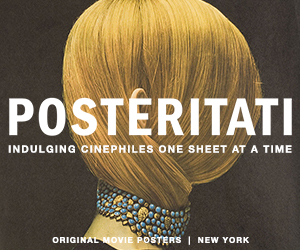Rogue One: A Star Wars Story commits the mistakes that Star Wars: The Force Awakens astutely avoided. If that 2015 reboot was an exercise in franchise care that managed both nostalgia and forward momentum, Rogue One is mostly a rote recycling of familiar elements. This doesn’t move the bar on what it means to be a Star Wars movie in any significant way.
Written by Chris Weitz and Tony Gilroy and directed by Gareth Edwards (2014’s Godzilla), Rogue One takes place, chronologically, between episodes III and IV (Revenge of the Sith and A New Hope). The central figure is Jyn Erso (Felicity Jones), a lone wolf who eventually finds herself leading an unauthorized mission to steal the plans for the Galactic Empire’s Death Star. Since we know the ultimate outcome from the other Star Wars movies (that the Rebel Alliance eventually gets its hands on the plans), the only real point of interest for Rogue One is exactly how that happens. Turns out, it happens pretty much the way things usually do in a Star Wars movie: with a climactic battle sequence in outer space, cross-cut with boots-on-the-ground efforts of rebel fighters on the planet below.
The films in this franchise are war pictures at heart, and Edwards embraces the genre more than most. An early skirmish on a desert planet between an Empire squadron and an extremist rebel group recalls the attacks of ISIS, complete with hostages being taken with bags tied over their heads. The aforementioned climax, which takes place on a tropical planet that resembles the Persian Gulf, could be a stand-in for a Gulf War assault (save for the lumbering AT-AT walkers).
For a lifelong Star Wars fan like myself, it is exciting to see such iconic elements employed in a different setting. Yet Rogue One botches this when it comes to the franchise’s recurring figures. Whereas Darth Vader was only a ghostly presence in The Force Awakens, he’s a supporting character here, given little of interest to do. Meanwhile, the choice to resurrect two other figures from the past via CGI animation is nothing short of disastrous. (One is Grand Moff Tarkin, originally played by Peter Cushing; the other I won’t spoil.) The effects aren’t convincing in either case; it’s about as jarring as if Tom Hanks dropped in from The Polar Express. Also distracting are meaningless cameos, from a Greedo spotting to more familiar faces. Are C-3P0 and R2-D2 now doomed to be the Stan Lees of this increasingly Marvel-like universe?
Are C-3P0 and R2-D2 now doomed to be the Stan Lees of this increasingly Marvel-like universe?
Despite a compelling prologue featuring Jyn as a young girl, Rogue One also fails to give us a fully realized sense of her as an adult. Jones, who had grit and charm in the Stephen Hawking biopic The Theory of Everything, goes through the action heroine motions here, failing to carve out the sort of distinct personality that Daisy Ridley and John Boyega did in The Force Awakens. The supporting players, meanwhile, are either bland (Diego Luna as a rebel spy) or not given enough time to register (Donnie Yen as a blind martial artist who may or may not be a Jedi). In fact, the only figure here I’d be eager to see again is a refurbished Imperial droid, K-2SO, given a comedically snide demeanor by Alan Tudyk.
The irony of this production is that if there was one Star Wars movie that didn’t have to play it safe, it was Rogue One. Separate from the “canon,” the movie could have spent less time squeezing in established characters and following a well-worn narrative pattern and more time creatively exploring a universe that is bizarre and vast. It wants to wrap us up in a Star Wars hug (and does so more awkwardly than The Force Awakens) when it could have been reimagining what a Star Wars movie might look and feel like.
There is one way Rogue One takes advantage of its peripheral status. Because they aren’t germane to the series proper, a number of the movie’s characters are “free” to die. Not only does this lend the battle scenes a jolt of realism, it also solemnly caps off the theme of obedience and sacrifice that the film, at its most interesting, attempts to explore. A central question for Jyn is who to obey, and why, and what the cost of her decisions will be. Despite its other problems, Rogue One: A Star Wars Story ends on a powerful visual grace note, in which a sacrificial act is performed in the face of impending apocalypse. It’s unexpected, imaginative, and still very much of a piece with the overall Star Wars sensibility—exactly what I had hoped all of Rogue One would be.



